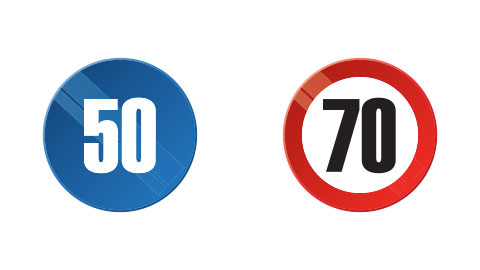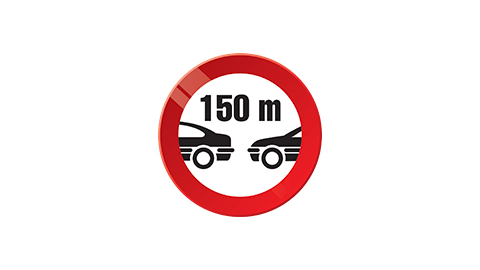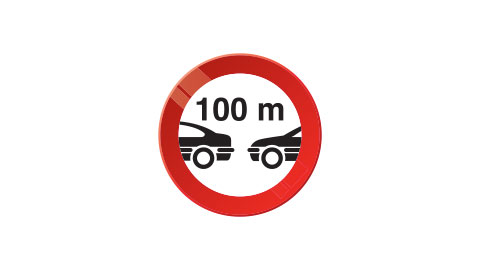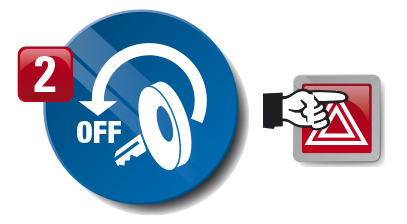Weather
Temperature
Mont Blanc Tunnel traffic
Weather
Temperature
Mont Blanc Tunnel traffic
Traffic regulations and rules of behaviour
Drive safely
-Tell the toll booth operator if your vehicle uses LPG: it won’t cost you any more
-Observe the traffic regulations
-Follow the information given
-For your safety, the tunnel is equipped with a video-surveillance system
The tunnel is equipped with 12 video-surveillance cameras linked to a system which automatically detects incidents (this relays the irregularities detected on to the screens for the operators at the control and command post). Another 37 cameras are mounted in the emergency lay-bys.
Attention. In Italy (outside the Tunnel), chains on board (not mounted) or snow tyres is mandatory from 15 October to 15 April
Safety regulations
Keep listening to the radio
20 FM frequencies can be received in the Tunnel. Recorded messages about the rules to be observed during transit are broadcast in 3 languages (Italian, French and English) every 6 minutes; if there is an incident, these frequencies are used by traffic surveillance operators to broadcast directly to your FM radio messages about what you should do.

Observe the no-overtaking rule
The Mont-Blanc Tunnel is a mono tube tunnel with traffic travelling in both directions. Overtaking is strictly forbidden.

Observe the speed limits
- Minimum 50 km/h
- Maximum 70 km/h
Speed detection systems and the system of penalties for exceeding the maximum speed limit are installed in the Tunnel. The information provided by these systems is handled directly by the Binational Police Service at the two aprons.

Keep your distance
The compulsory distance between vehicles is 150 meters: two blue lights located every 150 meters must separate your vehicle from the one preceding yours.
If traffic is stopped in the Tunnel, the 150-metre compulsory distance allows the safety distance of at least 100 metres from the preceding vehicle to be observed (as indicated in the Mont-Blanc Tunnel Traffic Regulation).

Standards of behaviour during an incident
If case of stop of the vehicle preceding yours
- Observe the minimum distance of 100m when at a standstill.
- Read the information on the variable message boards.
- Listen to the radio and follow the advice given.

If the barrier is down (or if there is a red traffic light)
- Stop immediately!
- Read the information on the variable message boards.
- Listen to the radio and follow the advice given.

In case of emergency (breakdown, accident, etc.)
- Use the parking areas on your right, located every 600m. If you cannot, position your vehicle against the pavement.
The Mont-Blanc Tunnel has 36 lay-bys (18 in each direction) every 600 m in both directions. They are 30 m long and 3 m wide.
- Switch off the engine and turn on your emergency lights.
- If possible, tell the control room using the SOS booths located every 100m.
The tunnel is equipped with SOS booths, placed every 100m alternately in both directions. Every SOS booth is equipped with one emergency telephone and 2 fire extinguishers with usage detector.
ATTENTION: SOS booths doesn’t ensure users protection in case of fire.

In case of fire (or a breakdown with smoke)
- Stop immediately.

- Switch off the engine and turn on your emergency lights.

- Quickly reach a safe green shelter indicated by flashing lights.
The Mont-Blanc Tunnel is equipped with 37 safe shelters (numbered from 0 to 36) located every 300 m on the Italy-France abutments. The safe shelters are connected to the evacuation route in a safe position under the road. This allows users either to move from one safe shelter to another or to leave the Tunnel, and the emergency services to enter the Tunnel on foot. The evacuation route is illuminated and equipped with stations that are connected by telephone to the Control and Command Posts (CCP) every 300 m. Each safe shelter is provided with a video-phone connection with operators at the control post and a public address system for broadcasting messages.

- If possible, tell the control room using the SOS booths located every 100m.
- If possible, use the extinguishers inside the SOS booths located every 100m (free of charge).
- Once inside the shelter, you are safe, and the control room is aware that you are there; follow our instructions carefully and read the information boards; in case of emergency a videophone will allow you to contact an operator directly.
